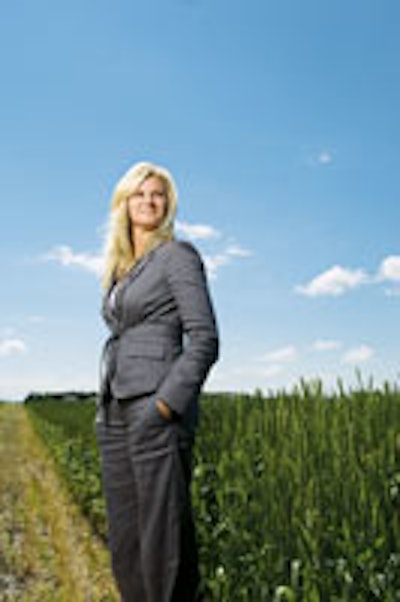
This is the last of four profiles of planners who are committed to eco-friendly events.
"I spent a lot of time to understand what running a socially responsible meeting includes,” says Angie Pfeifer, assistant vice president of corporate meetings, travel, and incentives for Investors Group, a Winnipeg, Manitoba-based financial firm. “There’s a lot more time you have to invest up front [for green events].”
Pfeifer plans internal conferences and sales meetings as well as sales incentives, and was recently charged with creating a plan to make the company’s meetings and events sustainable. That includes looking over everything from hotel contracts to banquet menus to vendor credentials to find ways to go green. It’s also her job to delegate specific green-research tasks among the seven-person department: For instance, one staffer might get the task of finding the most cost-effective green printer, while another will create green criteria for hotel RFP forms.
At a conference for 500 salespeople in Vancouver earlier this year, her department’s eco efforts were extensive. Leftover food was donated or composted, flower arrangements were all organic, signage was printed on recycled paper with vegetable inks, and off-site venues were chosen in part based on their proximity to the headquarters hotel to limit transportation needs. Vendors were able to source 90 percent of all food served from within 100 miles of the city.
Still, Pfeifer wants to do more in the future. “We talked about going organic, but that’s much more expensive,” she says. “While it may be something for us to strive for in the future, today our short-term step is to focus on local foods.”
Although some aspects of greening events are pricey—Pfeifer paid $3,200 for carbon offsets for one meeting alone, and local food and recycled paper cost several hundred dollars more than their conventional counterparts—there are chances to save money, too.
“Instead of giving attendees handouts for educational sessions, we post it all to an internal Web site,” she says. “It allows participants the flexibility to print, but only about half of them do, so we save there; plus, we recycle name tags and badge holders from one meeting to the next.” Pfeifer says she’s been able to funnel the savings from these changes into other green expenditures, like paying for eco-friendly food.
Although Pfeifer is taking a multifaceted approach, she acknowledges that there are some things that might never be 100 percent green. “We’re never going to get rid of gifts,” she says. “Salespeople are motivated by stuff. We can’t be so extreme that we turn them off.”



















